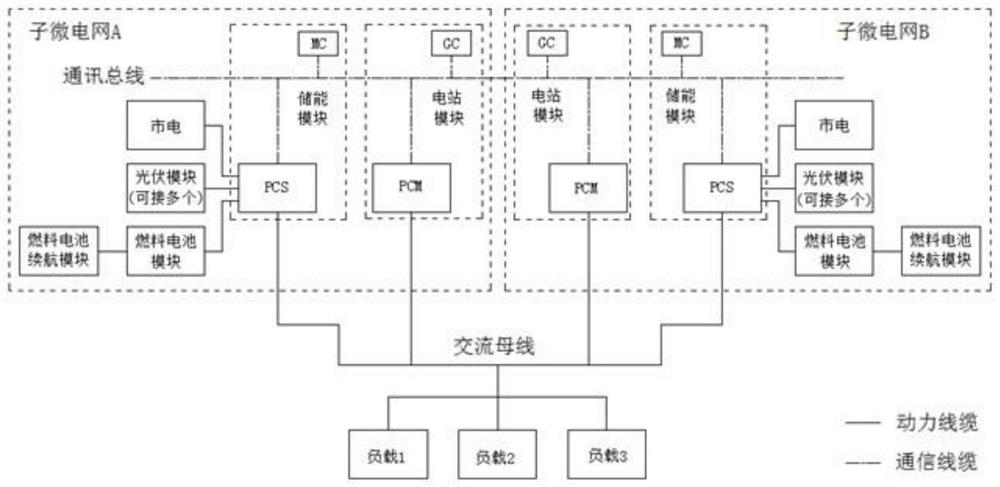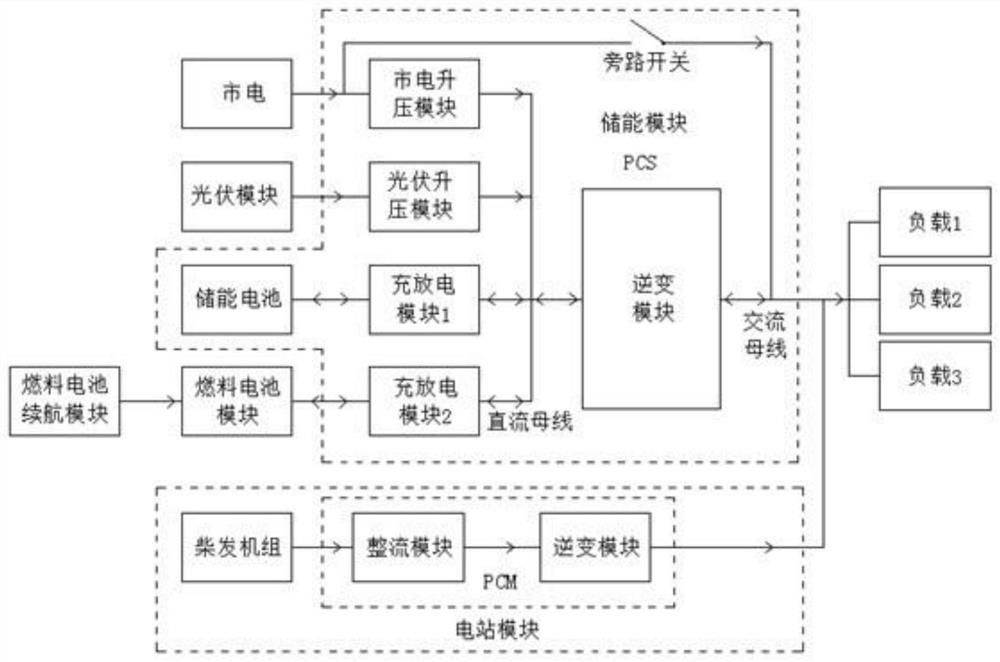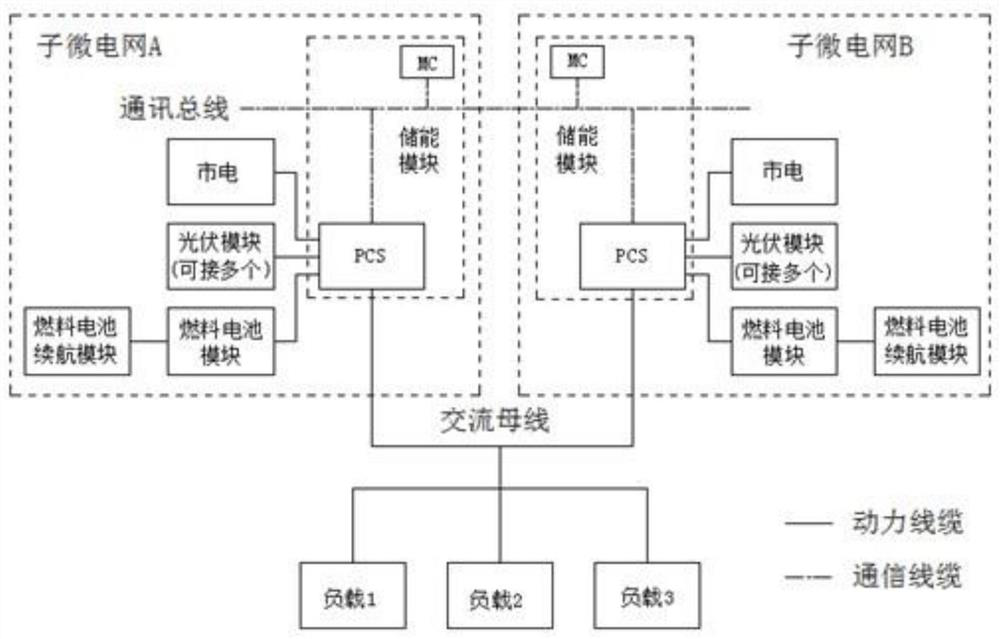Multi-energy complementary mobile microgrid system
A micro-grid and subsystem technology, applied in the field of micro-grid systems, can solve problems such as high grid construction costs and user electricity costs, high noise in power station systems, and low energy utilization, so as to achieve full utilization, optimal configuration, and flexibility , the effect of compact structure
- Summary
- Abstract
- Description
- Claims
- Application Information
AI Technical Summary
Problems solved by technology
Method used
Image
Examples
Embodiment 1
[0021] Embodiment 1: as figure 1 As shown, the present invention discloses a multi-energy complementary mobile microgrid system, which includes two microgrid subsystems that can work independently and be used in parallel, namely sub-microgrid A and sub-microgrid B; the microgrid The subsystem includes a power station module, a fuel cell module, a photovoltaic module, and an energy storage module, and adopts a modular design idea as a whole. After combining the four modules, the structure is a standard-sized container, which is flexible and can be set up according to the modular structure. In the civil construction house, the application scenarios are flexible and rich; the microgrid subsystem is highly scalable, and the connection between the communication bus and the AC bus can enable multiple microgrid units to realize mutual assistance, compatibility with loads of different power levels, and communication The bus communicates externally through the electro-optical converter...
Embodiment 2
[0023] Embodiment 2: as figure 2 As shown, the microgrid subsystem of the present invention includes an AC bus and a DC bus. The mains power is converted by the mains booster module and then converged to the DC bus. The output power of the photovoltaic module is converted by the photovoltaic booster module and then converged to the DC bus for energy storage. The output power of the battery is converted by the charging and discharging module 1 and then converged to the DC bus, and the output power of the fuel cell module is converted by the charging and discharging module 2 and then connected to the DC bus; the power on the DC bus is converted by the inverter module of the energy storage converter PCS Converged to the AC bus to supply the load, the power of the power station module is converted by the power station converter PCM and then converged to the AC bus to supply the load or reversely charge the energy storage battery of the energy storage module; when the mains system ...
Embodiment 3
[0024] Embodiment 3: as image 3As shown, the mobile microgrid system may not include a power station module. In order to extend the battery life of the system while taking into account the idea of combining four parts into a standard container, the entire microgrid subsystem can be composed of photovoltaic modules, energy storage modules, and fuel cell modules according to 2: In addition, the entire system can also be configured by photovoltaic modules, energy storage modules, fuel cell modules, and fuel cell endurance modules in a ratio of 1:1:1:1, of which the fuel cell endurance module is mainly responsible for the fuel supply. Storage function, all the other are with embodiment 1.
PUM
 Login to View More
Login to View More Abstract
Description
Claims
Application Information
 Login to View More
Login to View More - R&D
- Intellectual Property
- Life Sciences
- Materials
- Tech Scout
- Unparalleled Data Quality
- Higher Quality Content
- 60% Fewer Hallucinations
Browse by: Latest US Patents, China's latest patents, Technical Efficacy Thesaurus, Application Domain, Technology Topic, Popular Technical Reports.
© 2025 PatSnap. All rights reserved.Legal|Privacy policy|Modern Slavery Act Transparency Statement|Sitemap|About US| Contact US: help@patsnap.com



